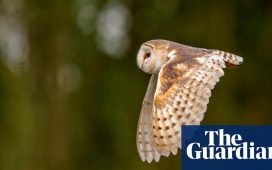Morning fog has reduced the visible landscape to a few tens of metres, and it takes the rhythm of my strides – up, two-three-four; down, two-three-four – to remind me that beneath the sward, this pasture is still rippled like a ribcage from the till and turn of long-ago strip farming. Post-enclosure, most of these riggs and furrows were lost to plough or plantation, leaving just these few in areas of lightly grazed and assiduously picturesque pasture. Elsewhere, the terrain became one of fields and hedges.
But change is coming again. Adjacent to the tellingly named Bog Hall, an area comparable to that inside York city walls is almost a year into a nature restoration scheme.
The fields are looking predictably scruffy, hedges are expanding, old ruts have filled with water. There will be much more of that when the long-awaited habitat engineers arrive. While most authorised beaver reintroductions in the UK have been in small enclosures, here the plan is to give them 450 acres to work with, alongside pigs and large grazers that will churn and prune and trample and further invigorate ecological processes. I cannot wait to see it.
The core of the site is a damp woodland, an already diverse mixture of trees including birch, oak, ash, hornbeam, hazel, elder and holly. Most are young, with skinny, race-for-the-light stems, but among them are some significantly girthier oaks, with spreading branches. Trees are eloquent teachers if you ask good questions, and I no longer feel even slightly self-conscious talking to them. These tell me they know a thing or two about change – of course, when we were young, this was all fields.
I approach one whose trunk is particularly carbuncled and whiskery with clusters of small shoots. Such epicormic growth can be a sign of stress, an attempt to power-up following injury or other change in circumstance. But on this tree, each twiggy cluster is capturing leaves falling from above, resulting in a series of natural hanging baskets in which herb robert and dog’s mercury have sprouted in the leaf mould. The tiniest of refuges, but they captivate me. I’m reminded that nature is fractal.
I have a word for you, says the tree. The word is epicentre.




